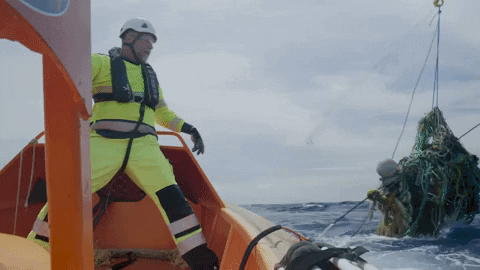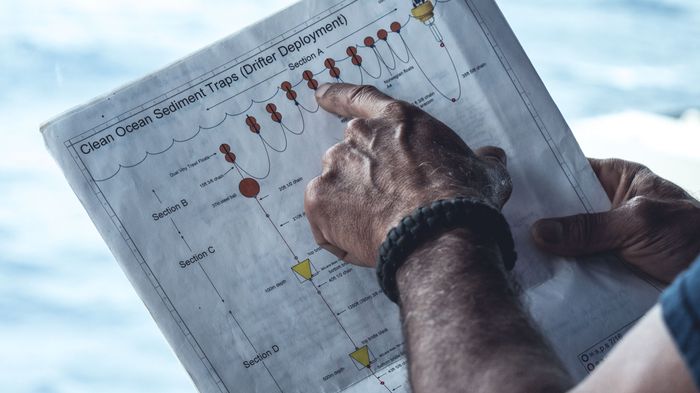
Chasing Plastics: How to Close the Ocean Plastic Mass Balance
Back to updatesAt The Ocean Cleanup we believe that you cannot solve a problem if you do not fully understand it. For this reason, we have put extensive efforts into fundamental plastic pollution research since the very beginning to help guide us to the best set of solutions. This work has continued in parallel to the development and deployment of our cleanup technology.
In the research of ocean plastic, there is an observed imbalance in the amount of plastic going into the ocean and the amount of plastic that we are finding afloat at the surface. It is estimated that every year several millions of tons of plastic waste enter the oceans. Some plastic sinks to the seabed or washes onto shore, and other, buoyant, plastics make their way to the ocean gyres. Once there, they accumulate, persist and eventually break down into micro- and nano-plastics. Although, how much plastic is staying at the surface and how much is below? How deep does plastic go into the water column? How much plastic is lost from the ocean surface during transport to the ocean gyres?
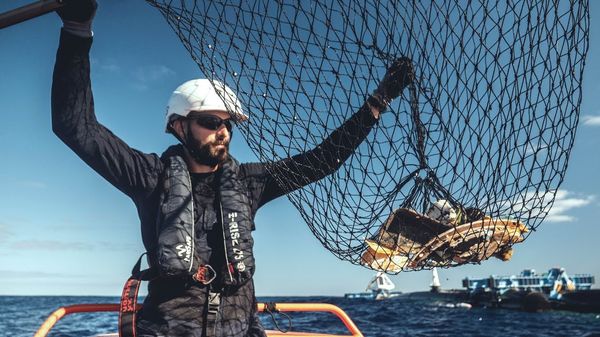
OBJECTIVE
The objective of the research team at The Ocean Cleanup is to close the ocean plastic mass balance. We want to know where the plastic is going once it enters the ocean and how far and deep it goes. However, obtaining data from remote regions in the ocean is difficult, especially in the garbage patches, which is perhaps one of the reasons why few have studied this subject in this area of the ocean. Fortunately, the deployment of System 001 has offered a great opportunity for the research mission of The Ocean Cleanup research team and has allowed the scientists on board to study the deep-sea distribution of plastic in this remote area like nobody else has to date.
HYPOTHESES
Currently, our scientists are working on three hypotheses that could explain the discrepancy between the amount of plastic estimated to float at the surface of the world’s oceans and the expected global inputs into the marine ecosystem. They are:
1. A significant fraction of plastic is removed from the sea surface through sinking or beaching.
The lack of information on plastic accumulation in the deeper water column and on the seabed is largely due to the inaccessibility of these remote areas. The Ocean Cleanup’s operations in the Great Pacific Garbage Patch provide a unique platform to spend extended time at sea and to collect new samples at the sea surface, but also at different water depths and on the seabed using state-of-the-art oceanographic sampling technologies. We deployed multiple sediment traps to measure the downfall of microplastics in the abysses. In cooperation with researchers from The Royal Netherlands Institute for Sea Research (NIOZ), our team also attached equipment to the sediment traps that enables studying the biodegradability of different plastics at in situ conditions. These instruments will be retrieved later this year as our scientists are coordinating a major research expedition to further study the vertical distribution and transport of plastic in the North Pacific, ranging from the ocean surface to the bottom of the sea, and from the coastal ocean to the ocean gyre.
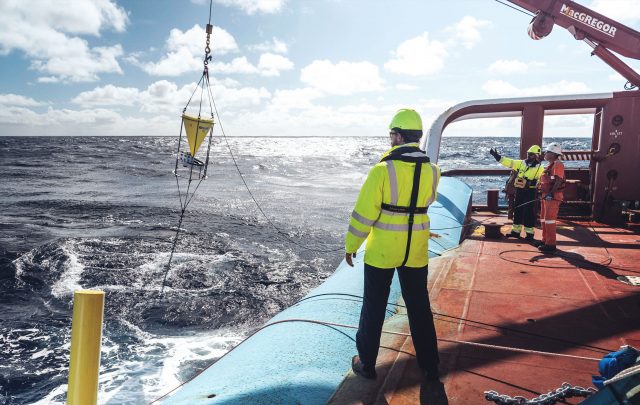
Besides collecting data from the highly understudied ocean water column and seafloor, The Ocean Cleanup is teaming up with coastal scientists to investigate the factors influencing the rates of beaching and re-releasing of plastic debris into the marine environment.
2. Plastic accumulation at the sea surface is underestimated
Numerical models simulating the dispersal of marine debris by ocean currents are useful tools to estimate the global accumulation of plastic at the sea surface, but the calibration of these models still relies on relatively sparse observational data. Consequently, large assumptions are made in place of data that is unavailable. Our research team is now developing capabilities for remote sensing of marine litter using satellites (RESMALI Project) and UAVs (unmanned aerial vehicles) with various research institutes, including the European Space Agency (ESA), the University of Oldenburg (Germany) and the University of the Aegean in Greece. We further believe in the strength of citizen-science and have developed a visual survey app that allows collecting standardized data on floating plastic debris concentrations by any sailors around the world. In addition to collecting high-resolution observational data on the amount of floating plastic debris, our scientists also are helping researchers at the University of Hawaiï at Mānoa and the Smithsonian Environmental Research Institute by deploying instruments and collecting data to study the source and dynamics of surface debris in the region, thus providing crucial information for a more accurate parameterization of ocean plastic dispersal models.
3. Inputs of plastic into the oceans are overestimated
The current accepted estimate on plastic input from land into the ocean was derived assuming a range of conversion rates from mismanaged waste into marine inputs of plastic. Specifically, it was assumed that around 25% of mismanaged plastic from populations living within 50 kilometers of a coast ultimately enters the marine environment (Jambeck et al., 2015). However, this figure has not yet been verified. Furthermore, riverine fluxes of plastic into the ocean can be episodic and dependent on prevailing environmental conditions. Thus, more work is needed to improve our knowledge of plastic fluxes into the Global Ocean. This is why we have a dedicated team of our scientists studying the inputs of plastic from rivers worldwide, conducting extensive fieldwork and developing numerical models.
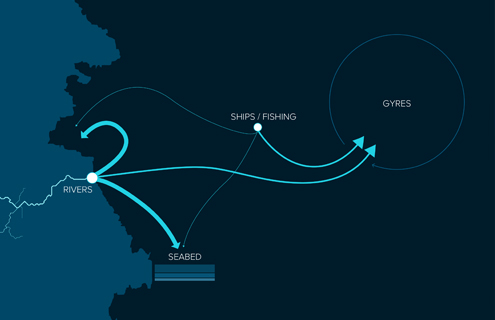
Lastly, our observations in the Great Pacific Garbage Patch revealed that a large fraction of plastic accumulating in the North Pacific subtropical gyre likely originates from marine-based sources, rather than from land. We are leading an international study, joining forces with fishery scientists, the seafood industry and stakeholders to investigate the magnitude of marine-based sources of plastic debris.
CONCLUSION
The objective of The Ocean Cleanup is to rid the world’s oceans of plastic. Understanding the source, transport and fate of ocean plastic serves this mission and that of the scientific community. Our research teams hope to make a significant contribution towards closing the plastic mass balance in the Global Ocean within the coming years. Understanding the formation of garbage patches and quantifying their persistency is a key question and we will continue to use the mission of System 001 to gain more insights and attain our goals. All our findings will be published in open-access peer-reviewed journals to ensure objectivity and scientific integrity.
